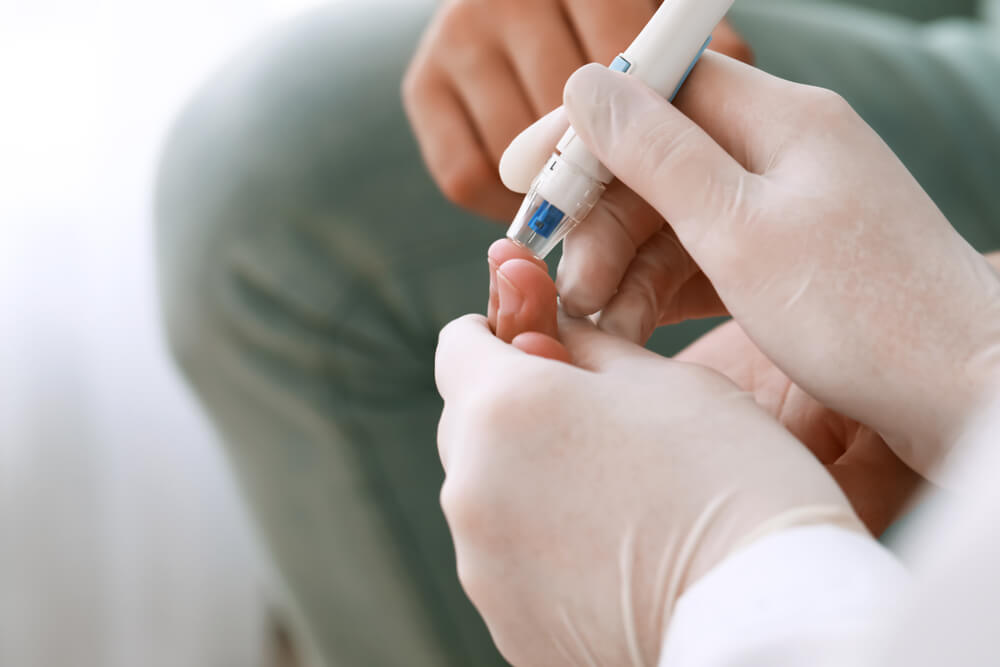


Diabetes care planning should not be done only when facing an emergency, when your doctor absolutely insists you reconsider several aspects of your health.
Good diabetes control planning should be done pro-actively so that your lifestyle naturally supports more positive health − especially if you have a genetic leaning towards diabetes.
A comprehensive care and management system is an absolute must for children, young adults, and the elderly with a hereditary disposition towards diabetes.
What must a robust diabetes care plan contain? Read on …
According to Diabetes UK, the main difference between Type 1 and Type 2 diabetes is that Type 1 diabetes is a genetic condition that often shows up quite early in life.
On the other hand, Type 2 diabetes is mainly related to lifestyle. It develops over time and with more significant neglect.
The critical thing to remember is that both types of diabetes are equally serious … but if you have either of these conditions, you need to take the same proper steps to manage it.
Diabetes is one of those conditions, for example, that can affect the heart if seriously neglected. Similarly, other ailments like hypertension, obesity, or cholesterol – or if you have a family history of heart disease – can all have multiplicative negative effects on your heart.
So, it’s always important to get help from your doctor to monitor if you are suffering from such ailments and assess the risk to your heart. It’s then time to devise a proper care plan to keep all such conditions under control so that they do no damage to other organs of the body like your heart.
Your diabetes care plan must consist of diet, medications, tests, and exercise. Let’s examine them one by one to understand how these can be planned for our daily lifestyles.
See our answers to typical queries from most people with diabetes …

Your diet is essential in diabetes care because it can help you control your blood sugar (glucose), manage weight, and prevent heart disease risk factors, such as high blood pressure and high blood fats.
When you eat extra carbohydrate-rich calories and fat, your body creates an additional unhealthy rise in blood glucose. If blood glucose isn’t kept in check, it can lead to high blood glucose levels (also called hyperglycemia) that could affect your nerves, kidney, and heart.
You have to make every calorie count by choosing nutritious foods. Eat more of these types of food in your diet:
Foods to avoid would be:
A good diabetes care diet would usually be based on regularly eating three meals a day. This helps you better use the insulin your body produces or gets through a medication.
Haphazard eating times can not only suddenly raise or lower your glycemic levels and make you feel very uncomfortable, but they can undo the excellent choices you make in picking the right foods to eat.
Your doctor is the best person to evaluate your diabetes levels and recommend the right drug prescription. But most people have queries about medicine, so it would be good to address these three main ones.

Many people who take medicine daily for diabetes often wonder if they can ever stop. They hope that if their blood sugar numbers are good and they are committed to a healthy lifestyle, their doctors may say medications can be discontinued.
Unfortunately, diabetes is a progressive disease, as Dr. Robert Gabbay, MD, PhD, Chief Medical Officer of the Joslin Diabetes Center in Boston says. So, although many people have reached a level where they could stop medications, doctors often advise them not to. Or, even if they temporarily stop medications, they may find they have regressed and have to go back to drugs at some point.
According to WebMD, you may sometimes have nausea, gas, bloating, diarrhoea, Vitamin B12 deficiency, and an upset stomach. These problems usually go away in a few weeks, as your body gets used to the medicine. It may also help to take the drugs with food.
Tell your doctor if you are taking any other medications so that he will know how to adjust the side effects caused by the combination of medicines you have to take.
According to Healthline, medication adherence is of critical importance for people with diabetes. Missing a dose can cause a rise in your blood glucose levels, leading to severe complications over time.
Missing one dose isn’t likely to be a very serious problem. But missing several doses can lead to hyperglycemia (high blood sugar). That is not a good sign.
Most diabetics know they should get regular diabetes control and care tests, but they usually have these main queries …

Your doctor will have you take one or more of the following blood tests to confirm the diagnosis or to see that your diabetes is under strict control:
Doctors say it would be ideal to have these checks every three months when newly diagnosed, then every six months once you’re stable. But never be tempted to do these tests on your own.
Your doctor has to see the results to compare them with previous ones to check the progress or status of your ailment.
Remember, blood sugar testing can be done at home using a blood glucose meter. The meter helps measure the amount of sugar in a small blood sample, usually from your fingertip, that you place on a disposable test strip.
But your meter has to be correctly calibrated, or you’ll be getting wrong readings. Get a new device when doubtful about its calibration. Don’t try to tinker with the settings of the old one.
Exercising regularly is essential for people with diabetes because it can help you manage your blood sugar levels and body weight. But of all the exercises, the best ones to do are those with low-impact (that is, exercises that do not add injuries to other parts of the body due to over-exertion).
Here are a few typical queries that people ask − and their answers …

Undoubtedly, walking is the safest and most effective exercise for people with diabetes to follow as part of the care plan. Spending about 30 minutes in brisk walking, at least four to five times each week, is a great way to increase your physical activity.
Walking is also a pleasurable activity outdoors, in gardens and parks, inhaling fresh air. You will find that if it feels too strenuous sometimes, you can lower your walking speed to maintain the regularity of your exercise without giving it up altogether.
If you’ve set yourself a quota of about 30 minutes of walking a day for exercise, doctors would probably advise you to take a 15-minute walk after every meal.
A study by the George Washington University School of Public Health and Health Services shows that moderately-paced 15-minute walks after meals work as well at regulating overall blood sugar in adults as a 30-minute walk once a day. Walking after every meal has an added benefit: it helps lower post-meal blood sugar for three hours.
DiabetesJournals.org recommends this: “A good starting target is to walk at least 1.2 miles/day or 30 min or 2,400 steps/day.”
Start with less and then make small incremental additions to the amount of walking you do. Don’t try to do too much because that’s the surest way to halt your exercise if your body feels like it’s being pushed too hard.
Taking care of your diabetes also is a way to take care of your heart. Fill your heart with loving care. Show your heart some love. Treat your heart responsibly.